By AHMAD ZAKX UTHMAN
On 14/09/2017
time:11:47pm
On April 14th, 1972, a man claiming to be a Detective Thomas from New York City’s 28th
police precinct placed a call requesting assistance for a fellow
officer in distress. The call, later determined to be a fake, prompted
two officers to rush to the address, which was the Nation of Islam’s
Harlem Mosque # 7. The two officers “smashed their way into the 116th St. Mosque.”[1] This violated of the NYPD’s policy with regard to the Muslim place of worship.[2]
Members of the mosque felt compelled to protect the sanctity of the
space and the safety of the congregation. A fight broke out. It is
unclear exactly what happened, but in the ensuing melee, Phillip
Cardillo, one of the two officers who had burst into the mosque
unannounced, was killed.
More
officers rushed to the mosque, creating a scene that the Amsterdam News
described as an “attack” and “invasion”. Harlem residents, who saw the
mosque as an essential asset to the community, formed a crowd of
concerned onlookers. Minister Louis Farrakhan, the spiritual leader for
Mosque # 7 at the time, arrived along with Harlem Congressman Charlie
Rangel. Members of the Mosque of Islamic Brotherhood, Harlem’s principal
Sunni Muslim institution, rushed over to help ensure the safety of the
roughly three to five hundred members of Mosque # 7 who were trapped
inside the building. Minister Farrakhan urged the crowd, which had now
grown angry, to keep calm. He and Congressman Rangel worked out a deal
with NYPD’s Chief of Detectives Albert Seedman to diffuse the situation.
One Mosque # 7 member was eventually apprehended and tried, but
ultimately acquitted.[3]
What
was so extraordinary about this 1972 incident was the Muslims’ ability
to leverage their influence to address the situation. Charges were not
brought against anyone from the mosque until two years later,
and the subsequent trial resulted in an acquittal. Further, the Muslims
demanded both “an apology from the city and an all-Black police force
for Harlem.”[4]
The Muslims of Mosque #7 also held a unity rally protesting the police
department’s actions. Sunni Muslims were in attendance, including the
world-renowned Egyptian scholar and Qu’ran reciter Sheikh Mahmoud Khalil
al-Hussary.[5] Muslims of differing theological opinions came together to oppose repressive policing of Muslims and people of color.
This was not the first time Muslims had fought for police accountability in New York City. If you’ve seen the Spike Lee film Malcolm X (or if you’ve read the explanation of Kanye West’s song Power on rapgenius.com),
then you probably know about Johnson Hinton, a member of the Nation who
was savagely brutalized and arrested after he and two other Muslims
confronted two white police officers for beating a Black man in Harlem
in 1957. Members of the Fruit of Islam, the Nation’s paramilitary-style
self-defense wing, marched orderly to the local police precinct, flanked
by a crowd of roughly five hundred angry Harlemites. In response to
Malcolm X’s leadership in coordinating the Muslims’ efforts on the night
of the beating, one NYPD officer famously exclaimed, “No one man should
have that much power.”[6]
Hinton received medical attention and the largest settlement for a
police brutality case in New York City’s history at that time. Both the
Nation of Islam’s run-in with the police and its ability to apply the
necessary pressure to obtain greater justice for its member were
indicative of the relationship it would develop with the NYPD over the
next decade and a half.
The
Nation’s 1972 call for local control of the police was not atypical.
Black Sunni Muslims in urban American cities pursued similar strategies.
While they may not have mounted campaigns for all-Black police forces,
many initiated efforts to maintain law and order in their own
neighborhoods. One example is the aforementioned Mosque of Islamic
Brotherhood (MIB). The lineal descendent of Malcolm X’s Muslim Mosque
Inc., MIB took Malcolm’s calls for local control to heart. In the late
1960’s, MIB adopted the heroin-infested block of 113th St.
and St. Nicholas Ave. in Harlem, pushing out criminals and drug dealers
and creating the backbone of what quickly became a peaceful, thriving,
and now rapidly gentrifying neighborhood. A later example is Masjid
Taqwa in Bedford-Stuyvesant, Brooklyn. Members of the community
purportedly patrolled their rooftop with scoped rifles in order to
police the neighborhood when the mosque was first built in 1980. As a
result, a roughly two block radius surrounding the mosque is now home to
grocery stores, restaurants, barbershops, and other businesses that
cater to a vibrant community of Muslims, and passersby need not worry
about crime or harassment.
During the 1960’s and 1970’s, Brooklyn’s Yasin Mosque also created a safe zone through the efforts of Ra’d,
its own paramilitary wing, which oversaw the well-being of mosque
members and the surrounding community. As with Mosque # 7, this
sometimes required skirmishes with hostile police officers who came from
outside the community.[7]
Yasin Mosque served as the nucleus for the nation’s largest network of
African American Sunni mosques, the Darul Islam movement – or the Dar
for short. Imam Jamil Al-Amin – formerly known as H. Rap Brown, a
prominent leader in the Student Nonviolent Coordinating Committee (SNCC)
and the Black Panther Party – exported the Dar’s local control model to
Atlanta. There, he and his followers cleaned up the notoriously
crime-ridden West End neighborhood, creating yet another safe zone
policed by Black American Muslims.
What
emerges from this history is a rich tradition of local control and
community policing among Muslim African Americans. While such strategies
varied by context and location, they generally followed a three-part
model. First, community members policed their own neighborhoods,
organically creating safe spaces where businesses, schools, and
community life flourished. Second, these groups created strong
relationships with community-minded elected officials, and Muslims and
people of color in law enforcement, to maintain these spaces.[8]
Third, they leveraged their relationships with members of the broader
community – who were grateful for the Muslims’ contributions to the
community – to engage in protests to ensure police accountability when
necessary.
As the list of Black men and
women killed with impunity by police grows, this history of Black
Muslims’ strategies to foster community control and fight police
brutality is becoming increasingly relevant. The Islamic Society of
North America (ISNA) issued a statement in the wake of the Baltimore
uprising earlier this year. In its response, ISNA demonstrated just how
out of touch the organization was with the community it seeks to
represent.[9]
While our knowledge of the illegal surveillance and harassment of
Muslim communities grows, the links between these current injustices and
the infamous COINTELPRO policies that targeted scores of Black
communities (Muslim and non-Muslim alike) are unknown to many Muslim
Americans. Rediscovering this history carries a serious urgency. As
Islamophobia becomes increasingly widespread, Muslims stand to lose much
of the support and cultural capital they have gained over the course of
the last 50+ years, which came as a result of their efforts to make
life better for working-class communities and people of color. More
importantly, the freedom, security, and lives of millions of American
women and men victimized due to their race and religion is at stake.
Muslims in America are in dire need of the insights provided by the
Black Muslim experience, just as communities of color are in dire need
of the local control strategies that Black Muslims once pioneered.
[1] “Cops Invade Mosque: Editorial Invasion of Mosque No. 7.” New York Amsterdam News (1962-1993); Apr 22, 1972. p. A1.
[2]
Since Mosque # 7 was deemed a “sensitive location”, police established a
protocol stipulating they provide advanced notice if they needed to
search the mosque. In the past, the NYPD was duly granted permission and
entered the premises in a respectful manner.
[3] Ibid.
[4] Russell, Carlos. “A funny thing happened.” New York Amsterdam News (1962-1993); May 6, 1972. p. A5.
[5] Craft, Mona. “Muslims seek unity.” New York Amsterdam News (1962-1993); May 13, 1972. p. B12
[6] Marable, Manning. Malcolm X: A Life of Reinvention. Reprint edition. New York: Penguin Books, 2011. p. 128
[7] Curtis, R.M. Mukhtar. “The Formation of the Darul Islam Movement.” In Muslim Communities in North America, by Yvonne Yazbeck Haddad and Jane I. Smith. SUNY Press, 1994. 59
[8]
Even the Nation of Islam’s supreme leader, the Honorable Elijah
Muhammad, received an award from the National Society of Afro-American
Policemen in 1969 at a New York City luncheon. Minister Louis Farrakhan
accepted the citation on his behalf. “Farakhan to Accept Citation.” New
York Amsterdam News (1962-1993); June 14, 1969. p. 3.
[9]
For the statement and some of the critiques against it, see:
Contributor, Guest. “MuslimARC – Open Letter to American Muslim
Organizations on Police Brutality, Baltimore and Freddie Gray.” Altmuslim. Accessed May 16, 2015. http://www.patheos.com/blogs/
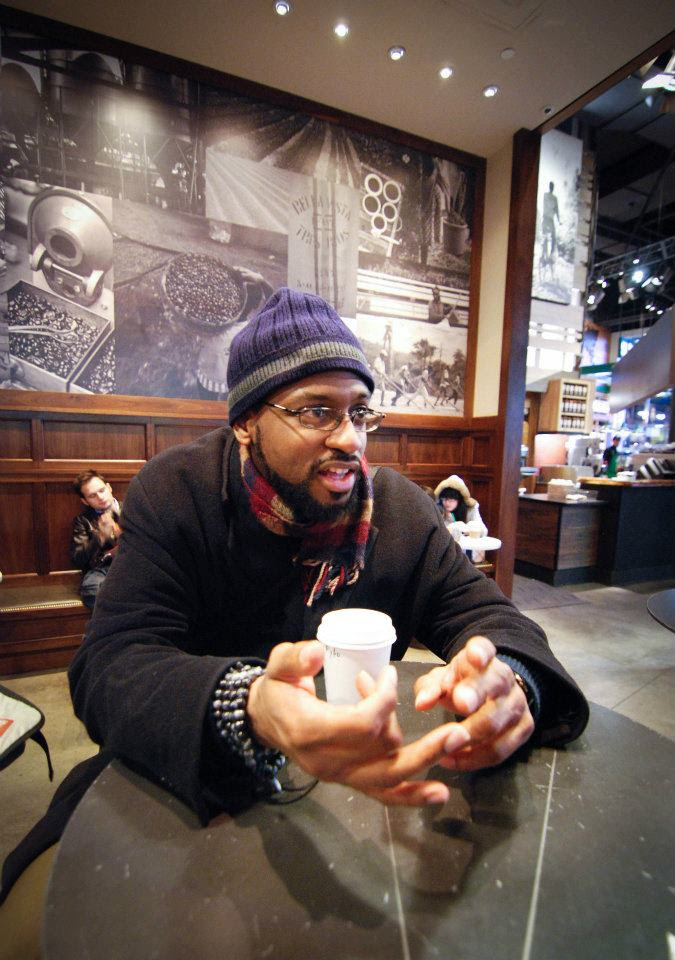
Rasul Miller
is a PhD student in History and Africana Studies at the University of
Pennsylvania. His research interests include Muslim movements in 20th
century America and their relationship to Black internationalist thought
and West African intellectual history.
|
Thursday, 14 September 2017
Friday, 4 August 2017
| by Ahmad zakx othman | on August 4 2017 | ||||||||||||||||||||||||
| |||||||||||||||||||||||||
Using Gm
Tuesday, 20 June 2017
|
During
the twentieth century, Islam and Muslims came to enjoy a largely
positive reputation among Black communities throughout the country,
particularly in urban centers. This was a byproduct of the increased
visibility of Black American Muslims in these communities as various
kinds of Islamic religious movements grew in popularity from the 1950s
onward. This trend was also fostered by the efforts of Black Muslim
congregations to address some of the social, political economic and
psycho-spiritual problems that Black Americans faced in an American
society marked by violent anti-Black racism and systematic inequality.
Black Muslims and other Black Americans sympathetic to the Muslim faith
often cited the long history of Islam on the African continent as
indicative of Islam’s status as a more affirming and empowering religion
for Black people, especially in comparison to Christianity. However,
not everyone shared these sentiments.
During
the 1970s and 1980s, a particularly anti-Islamic strand of Black
cultural nationalism began to emerge within the broader cultural and
intellectual movement known as Afrocentrism.[1]
Black intellectuals influenced by this line of thinking depicted Islam
as a religion that was foreign to Africa and brought there by Arab
invaders. They
further held that Muslim attitudes toward race and slavery historically
rendered the religion no less complicit in the oppression of Black
people than that of the Western European Christians who colonized Africa and the Americas. Some non-Black, western educated academics share this historical analysis. Recent publications like Chouki El-Hamel’s Black Morocco and Bruce Hall’s A History of Race in Muslim West Africa
take this critique of Islam’s racial track record a step further by
attributing modern notions of racial difference and anti-Blackness to
precolonial Muslim societies on the African continent. This approach
goes against that of earlier scholars, and thus marks a major shift in
the way ethnic difference in the premodern world is depicted. Recent
years have also witnessed a resurgence in the popularity of this strain
of Afrocentrism among Black popular intellectuals, sometimes referred to
somewhat derisively as “hoteps.” In this article, I will attempt to
explain the rise in popularity of an anti-Islamic brand of Afrocentrism
during the 1970s and 1980s, and the political projects of certain
scholars who played a key role in promoting it. I will also challenge
the reliability of the historical narrative these scholars advanced,
particularly with regard to Islam’s relationship to the societies of
West and Central Africa.
Chancellor Williams and the Emergence of Anti-Muslim Afrocentrism
In
charting the anti-Muslim strain within Afrocentric thought, it is
helpful to begin with the publication of Chancellor Williams’ The Destruction of Black Civilization in 1974.
This work became a mainstay in Afrocentric circles and was used in some
Black Studies college curricula. However, the book was later criticized
by scholars who argued that it was filled with historical inaccuracies and unsubstantiated assertions.
Throughout the book, Williams refers to “white Arabs” and asserts that
color diversity among Arab peoples was due to a history of Arab slavery
similar to European slavery in the Atlantic world. He contends that,
“Blacks are in Arabia for precisely the same reasons Blacks are in the
United States, South America, and the Caribbean Islands—through capture
and enslavement.”[2]
He further projects American notions and histories of race on the
premodern Arab and African worlds, referring to brown skinned Arabs as
“mulattoes.” Williams’ treatment is rife with reifications and
contradictions. But what is perhaps most notable is the degree to which
Williams’ depiction of the relationship between Islam departs from that
of earlier scholars like Frank Snowden and Cheikh Anta Diop, both of
whom also figure prominently in Black Studies cannons. Snowden’s 1970
work Blacks in Antiquity makes the competing claim that modern
notions of race and racial hierarchy did not exist in the premodern
world, even while various forms of ethnocentrism did. Snowden criticized many Afrocentric scholars
including pioneering Senegalese historian and anthropologist Cheikh
Anta Diop, challenging their views on the racial identity of members of
premodern Mediterranean and North African societies.[3]
However, even Diop’s analysis differs greatly from Williams’ with
regard to the relationship between Islam and Africa. According to Diop,
the notion that Islam was intrinsically foreign to African societies
south of the Sahara, or that Islam’s presence in the region was due to
conquest and forced conversion was simply false. Diop famously observed
that, “[m]uch has been made of Arab invasions of Africa: they occurred
in the North, but in Black Africa they are figments of the imagination.”[4]

So what led Williams to construct a competing historical narrative? An observation made in the early chapters of Destruction of Black Civilization
may offer a clue. Williams charges that, “Blacks in the United States
seem to be more mixed up and confused over the search for racial
identity than anywhere else. Hence, many are dropping their white
western slavemasters' names and adopting, not African, but their Arab
and Berber slavemasters' names!”[5]
Williams, who was a practicing Christian, did not absolve European
Christians of guilt in perpetuating the institution of slavery and the
ideology of white supremacy at the expense of people of African descent.
However, he reserved some of his staunchest criticism for
Muslims—leading him to speak, at times, in absolutes and hyperbole, such
as when he called the Egyptian ruler Muhammad Ali “the greatest
murderer of Blacks that ever set foot on the African continent.”[6]
Williams’ seems to take issue with the rising popularity of Islam among
Black Americans. For him, the true project of liberation would be
served by embracing an “African” identity that was decidedly non-Muslim,
making him more apt to celebrate the rulers and resistance movements of
Central African societies like Angola and the Congo. The summaries on
the dust jacket of Destruction of Black Civilization even include a relevant criticism attributed to the Muhammad Speaks newspaper. After praising aspects of the book, the unidentified Muhammad Speaks
representative observes that, “(Williams’) claim that Islam helped the
slavery of Black Africa is untrue because he used white text rather than
accounts of non-whites academia and the truth.” Although the biases of
the flagship publication of the Nation of Islam might seem obvious,
Williams’ was indeed espousing a view that aligned with some notable
white colleagues.
The Orientalist Origins of Anti-Muslim African Historiography
The
practice of disassociating Islam from Africa in spite of its
1,000-year-old history on the continent was not without precedent. Other
notable white scholars exhibited the same tendency. The even more
brazen tactic of attributing to Arabized North Africans the
anti-Blackness of European colonialism was largely pioneered and
popularized by the noted British American historian Bernard Lewis.
Lewis, like Williams, was forthright about his consternation over Black
Americans’ growing embrace of Islam. In this regard, he expresses his
frustration specifically with the twentieth century’s most visible
theorist and proponent of Islam among Black Americans, Malcolm X. After
praising Malcolm X as “an acute and sensitive observer” exhibiting the
“inevitably heightened perceptions of an American black” with regard to
issues of race, he argues that his Islamic faith “prevented him from
realizing the full implications of what he saw” during his travels to
the Middle East.[7]
Lewis goes on to suggests that the racial dynamics of the precolonial
Muslim world were comparable to those of segregationists Alabama. A wide
range of scholars writing on Islam, including John Hunwick, Bruce
Hall, and Richard Brent Turner, have presumed Lewis’ claim to be both
true and universal. As a result, they applied his dubious
characterization of racial dynamics in premodern Muslim societies to
precolonial West Africa. Other historians of West Africa have
demonstrated that, with regard to Muslim West Africa, such depictions
are simply false.
In
a working paper by Africanist historians Alden Young and Karen
Wietzberg entitled “Does Race Have a Global History,” the authors place
Lewis’ work within its proper political context.
“Written
in the aftermath of the Six Day War, this work argued that racism was
endemic to the Islamic world. Lewis produced this work, he acknowledged,
in order to counter what he saw as the pernicious myths of Arnold
Toynbee and Malcolm X that color prejudices were unknown to the Islamic
world. Lewis, whose work was shaped by the geopolitics of the Cold War,
became one of the most widely cited authors on the topic of slavery and
race in Muslim societies.”
Lewis’
status as a Cold Warrior was something he did not deny. At times, he
was quite transparent about his political positionality, such as in his
exchanges with Edward Said in the New York Review of Books. Lewis
does not challenge, for example, Said’s assertion that his scholarship
is motivated by his political stance for increased American military
support of Israel, and his resulting desire to undermine the cause of
Pan-Arabism. Rather, he challenges Said to come clean about his own
political agenda.[8]

In
an article partly concerned with tracing the same intellectual
genealogy that I consider here, the political scientist Hisham Aidi
asks, “[h]ow did Arabs transmute, almost overnight, from being seen by
African-Americans as allies in the struggle against Western racism to a
slave-trading ‘intruder race’ occupying Africa? How did the pro-Arab
pan-Africanism of Malcolm X lose out to the anti-Arab black nationalism
of [Molefi] Asante, Williams and [Wole] Soyinka?”[9]
Indeed, Malcolm X’s embrace and articulation of a politics of Third
World Internationalism, and the growing support of many Black Americans
for Palestinian and North African revolutionary movements that he helped
to foster were very much at odds with Lewis’ political aims. Lewis’
historical representation of race in Muslim societies, augmented by
Afrocentric scholars like Williams and others, would go on to have a
huge impact on both popular and scholarly notions about the relationship
between Islam and anti-Blackness.
Conclusion: Using Black History to Inform Black Islam
Many influential scholars cite Bernard Lewis in their treatments of racial prejudice in the Arabic speaking world.[10]
They extend his analysis to the African continent, taking Lewis’
assertions as objective and representative of Islam around the globe.
They do not consider how categories of race in Africa and the Arabic
speaking world were altered by colonization, Euro-American slavery, and
the rise of Western imperialism. For example, precolonial historical
chronicles reveal that Turkish slaves could be purchased in the West
African city of Timbuktu, and Europeans faced the threat of being
enslaved in North Africa until well into the nineteenth century. These
realities are inconsistent with the historical narrative offered by
Orientalist scholars (like Bernard Lewis) and Afrocentric scholars (like
Chancellor Williams) alike, both of whom would have us believe that
African Muslim societies subjugated African people. By obscuring this
history and the transformations that led to the increased association of
Blackness with slavery during the trans-Atlantic slave trade, these
authors paint a picture that gives the impression that anti-Blackness is
primordial—anachronistically locating its origins in the ancient world.
Conversely, Afrocentricity and Islam can be easily reconciled through
the more accurate historical narratives of scholars like Diop and
Snowden, as well as more recent historians of Africa like Humphrey
Fisher and Rudolph Ware among others. These scholars recognize that
Euro-American slavery and colonization changed how Africa and its people
were perceived and treated around the world. Before these shifts, Islam
was simply one of the various religions that African people freely
embraced, finding it both compelling and affirming. This is the
historical perspective that gave rise to the anti-colonial
Pan-Africanism articulated by Malcolm X and other Black American
radicals who built solidarity with people of the Third World. In light
of this historical perspective, Afrocentricity and Islam need not be at
odds.
[1]
In this article, I use the term Afrocentrism in the broadest possible
manner, referring to a cultural and intellectual orientation that
centers the history and experiences of people of African descent and
seeks to address mechanisms that disenfranchise those people. This is
how I have encountered the term in non-academic circles, though it is
often defined more narrowly than this by academics.
[2] Williams, Chancellor. The Destruction of Black Civilization: Great Issues of a Race from 4500 B.C. to 2000 A.D. Chicago, Ill: Third World, 1974. p. 23
[3] Snowden, Frank. "Misconceptions about African Blacks in the Ancient Mediterranean World: Specialists and Afrocentrists." Arion, Third Series, Vol. 4, No. 3 (Winter, 1997), p. 28-50
[4] Diop, Cheikh Anta. Precolonial
Black Africa: A Comparative Study of the Political and Social Systems
of Europe and Black Africa, from Antiquity to the Formation of Modern
States. Chicago: Lawrence Hill, 1987. p. 101-102
[5] Williams, Chancellor. The Destruction of Black Civilization: Great Issues of a Race from 4500 B.C. to 2000 A.D. Chicago, Ill: Third World, 1974. p. 23
[6] Ibid., p. 159.
[7]Bernard Lewis, Race and Color in Islam.New York: Harper and Row, 1971. p. 3.
[8] Bernard Lewis, “The Question of Orientalism,” The New York Review of Books 29: 11 (1982) and the responses Bernard Lewis, Edward Said and a reply by Oleg Grabar, “Orientalism: An Exchange,” The New York Review of Books 29:13 (1982).
[9]Aidi,
Hisham. "Slavery, Genocide and the Politics of Outrage Understanding
the New Racial Olympics." Slavery, Genocide and the Politics of Outrage |
Middle East Research and Information Project. Middle East Research and
Information Project, n.d. Web
[10]Chouki El Hamel, Black Morocco: A History of Slavery, Race, and Islam.Cambridge, UK: Cambridge University Press, 2013. p. 297.
Rasul Miller is
a PhD student in History and Africana Studies at the University of
Pennsylvania. His research interests include Muslim movements in 20th
century America and their relationship to Black internationalist thought
and West African intellectual history.
|
Saturday, 17 June 2017
Blacks Islamic History: A Trajectory of Manumission: Examining the Issue o...
Blacks Islamic History: A Trajectory of Manumission: Examining the Issue o...: Conversation A Trajectory of Manumission: Examining the Issue of Slavery in Islam ...
Blacks Islamic History: The African Qurʾā n: Ramadan Remedies fo r Racial ...
Blacks Islamic History: The African Qurʾā n: Ramadan Remedies fo r Racial ...: The African Qurʾā n: Ramadan Remedies for Racial and Religious Intolerance on July,16, 2017 Qurʾān , Sura Yusuf, 12:3...
The African Qurʾā
n: Ramadan
Remedies fo
r Racial and
Religious Int
olerance
on July,16, 2017
Qurʾān , Sura Yusuf, 12:3
“The night of my Ascent, I saw Moses who was a Tall brown-
skinned, kinky-haired man.”
Authentic Saying of the Prophet, Saḥīḥ Bukhāri, 462
The Qurʾān, as a rule, is colorblind. It is the Universal Book.
God cares about hearts and deeds, not skin color and hair texture. So
the Qurʾān, unlike other Holy books, lacks racial markers. The only
partial exception to this is the specification that the first human, Ādam (as)—whose name meant black in old Arabic—was formed from fermented black clay. Given Ādam’s
origins maybe we shouldn’t be surprised that many (probably most) of
the tales of the Prophets in the Qurʾān take place in Africa, or that
Black folks figure prominently even in stories set outside the
continent. The narratives of Joseph and Moses, Abraham and Hagar and
Solomon and Sheba, along with countless others, lead us back to Ancient
Africa, and especially the Nile Valley. The modern disciplines of
African history, archaeology, linguistics, and anthropology all show
that the progenitors of Egyptian civilization were—in today’s
terms—black, and that Egypt’s civilization came from inner African
sources. Too bad Hollywood didn’t get the memo!

But an African Qurʾān? Some will say that there is no such thing. However, I argue that the Qurʾān is African because it speaks of Black people and because Africans have recited, taught and lived it in ways that can be instructive to us in America. But most importantly, I will argue that the Qurʾān is a book that speaks to Black people because it speaks to all people. Surah Luqman, a chapter named for a black man, reminds us of the Qurʾān’s vision of a common origin and destiny for humanity: “The creation of all of you—and your resurrection—are as a single soul. Indeed God is Hearing, Seeing” (Q 31:28)
Black People in the life of the Prophet and the Spread of Islam in Africa
Unlike the Qurʾān , The Prophet did sometimes speak of skin color or hair texture—as when he mentioned Musa’s black skin. For many medieval scholars Musa’s blackness (and the blackness of the Egyptians) was so obvious they mentioned it only in passing. For Qurtubi “Musa was extremely dark brown in skin color (asmar shadid al-asmara).” Remember in Sura Ta Ha when Moses puts his hand inside his shirt and it comes out white without illness? (Q 20:23) The Tafsir of the two Jalals (al-Suyuti and al-Mahalli) says it emerged white, “and not its normal dark color.” The famous historian al-Tabari was more blunt still: “According to what was related to us, Moses was black-skinned and God made Musa’s hand turning white, without being stricken by leprosy, a sign for him.”
The life of the Prophet—is full of Black people as well. His last spouse, Mariya was an Egyptian woman, and perhaps to honor his illustrious ancestor who became the father of the Arabs by his marriage to an Ancient Egyptian, he named their son—who passed away in infancy—Ibrahim. Bilal—a freed slave—was likely the second adult male to accept Islam after Abu Bakr (r). When he climbed atop the House of God to call the prayer it signaled to Quraysh the social revolution that was possible in the new religion—turning their world upside down.

Decades later when Arab armies brought Islam forth from its cradle in Arabia, conquering much of the known world, they did not conquer sub-Saharan Africa. In 652 CE Nubian archers stopped their march down the Nile and the Muslims signed a mutual non-aggression treaty. In sub-Saharan West Africa, where the Empire of Ghana controlled much of the world’s medieval gold trade, here too the army was unconquerable. Medieval Arabic sources claim that the Emperor of Ghana could put 100,000 soldiers in the battlefield, 40,000 of them archers. No armed Arab conquest brought Islam to sub-Saharan Africa where one-in-six of the world’s Muslims now reside.
Rather, teachers and clerics were the primary agents in spreading the faith. From towns like Jakha in what is now Mali, the Jakhanke and other African clerical clans traveled as merchants, farmers, and scholars into all the countries of the African west, often as Muslim minorities among non-Muslim populations. Over the course of time, they were instrumental in peacefully converting populations from Senegal in the west to Niger in the east, from Mali in the north to Ghana in the south. Local, indigenous West African populations voluntary accepted the new religion, and some families came to specialize in teaching the Qurʾān and the sciences of Islam. In Part Four, I will discuss the unique Jakhanke approach to the Qurʾān, and its particular relevance for Black Americans.
To conclude, let me be clear: focusing on Africans in the Qurʾān and the Qurʾān in Africa should not cause us to replace one ethnocentrism with another. Sura Maryam reminds us that prophethood was not the monopoly of the children of Israel or any other tribe. God’s teachers do not belong to one people, but to all people.
After mentioning Enoch, Abraham, Ishmael, Isaac, Jacob, Moses, Zachary, John, and Jesus (upon them peace) all in a single Sura, God reminds us in a single aya that the blessed teachers of His word were from (and for) all the children of Adam and Eve:
These are some of the Prophets whom God has blessed from Adam’s progeny, and from those We carried with Noah, and from the progeny of Abraham and Israel, and from those whom We guided and elected. When the signs of the Merciful were recited to them, they fell down prostrate and wept. (Q 19:58)The Qurʾān reminds us that God’s glory should leave us humbled. Claiming a monopoly on God, on the other hand, reveals pride, arrogance, and haughtiness (kibr, istikbar, takabbur). Indeed, as African American Muslims we know Black supremacy as creed is a theological dead end. Rather, by positing an African Qurʾān, my goal is to use Qurʾān as Furqān—criteria for understanding—to help undo the damage centuries of racial
and religious intolerance have wrought. In Part Two of theAfrican Qurʾān, I will discuss the causes and cures for intolerance through a discussion of the third juz of the Qur’an.
Subscribe to:
Comments (Atom)
Blacks Islamic History: Blacks Islamic History: MUSLIMS AND JAZZ IN 1953
Blacks Islamic History: Blacks Islamic History: MUSLIMS AND JAZZ IN 1953 : Blacks Islamic History: MUSLIMS AND JAZZ IN 1953 : ...
-
Conversation A Trajectory of Manumission: Examining the Issue of Slavery in Islam ...
-
The African Qurʾā n: Ramadan Remedies fo r Racial and Religious Int olerance on July,16, 2017 Qurʾān , Sura Yusuf, 12:3...
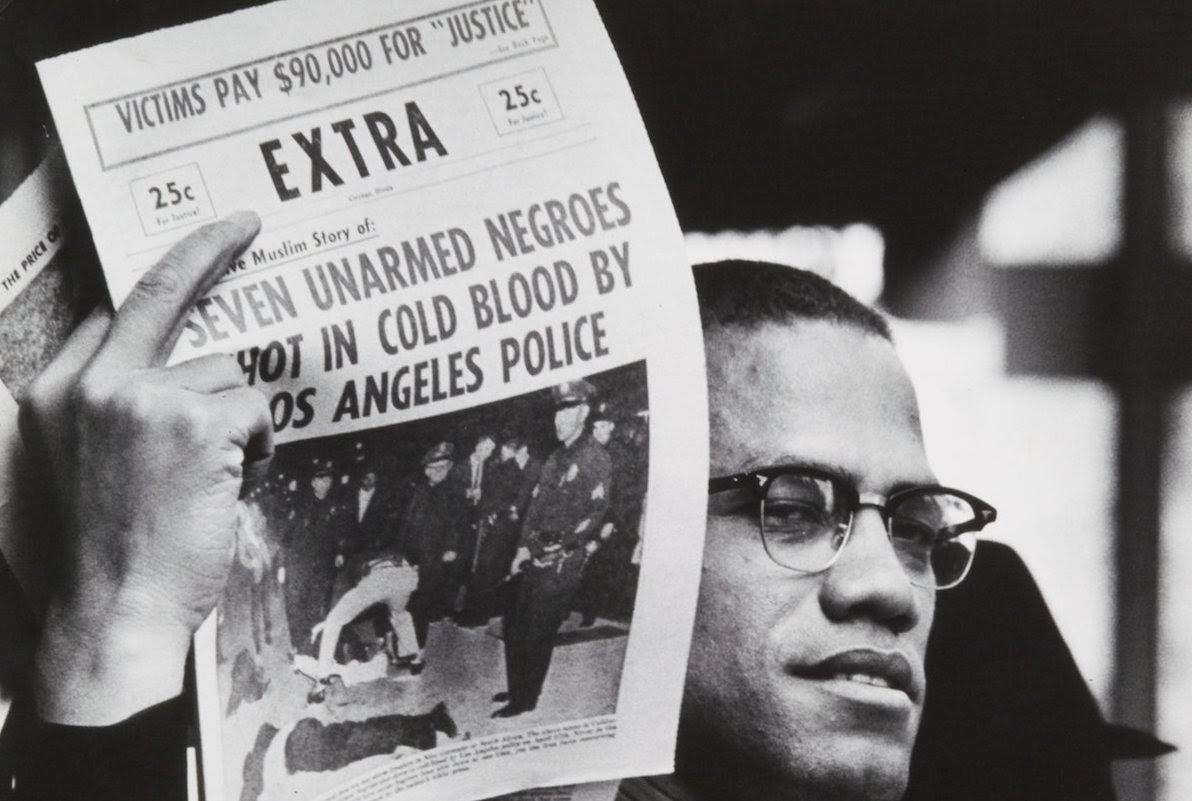

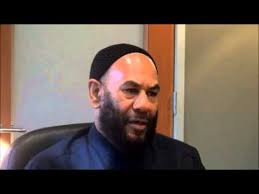 and serve as an active leader in Los Angeles, Calif, and surrounding
communities. This horrible incident parallels the indignities and
injustices that other African American leaders have suffered as a result
of
and serve as an active leader in Los Angeles, Calif, and surrounding
communities. This horrible incident parallels the indignities and
injustices that other African American leaders have suffered as a result
of 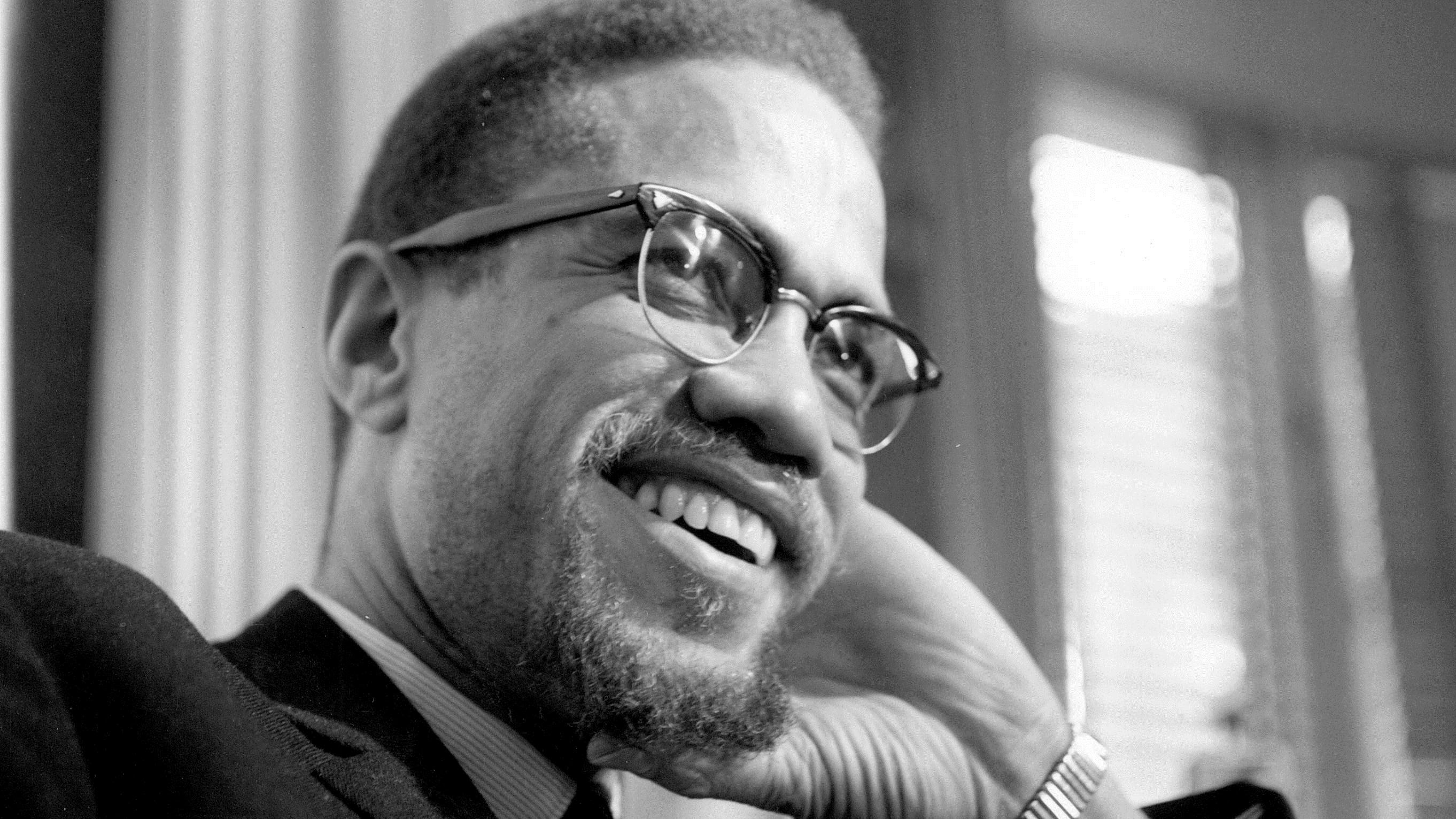 removed
mural of Imam Khomeini and Malcolm X, that once faced Masjid Al-Rasul,
LA. Imam Khomeini aligned his teachings with the objectives of the
Prophetic mission of Muhammad (saw) which “was to teach the people the
path to eliminate oppression; to teach the path that would enable the
people to confront the exploiting power.” [1] For Shaykh Abdul-Karim,
establishing this justice aligns with preparing for Imam Mahdi (ajf) who
the Holy Prophet Muhammad (saw) tells us: “After me are Caliphs and
after Caliphs, rulers and after rulers, kings and after kings, emperors
and tyrannical and rebellious dictators. After that a man from my Ahlul
Bayt (a.s.) will reappear and fill the earth with justice and equity
just as it would be fraught with injustice and oppression.” [2] This
mission and legacy is not without its challenges as exhibited by the FBI
raid and the struggles to fund necessary programing costs for the
expansion of the Masjid Al-Rasul Foundation into the Fifth Ward in
Houston, Texas, and more recently, Chicago. Despite these challenges,
MAR proceeds.
removed
mural of Imam Khomeini and Malcolm X, that once faced Masjid Al-Rasul,
LA. Imam Khomeini aligned his teachings with the objectives of the
Prophetic mission of Muhammad (saw) which “was to teach the people the
path to eliminate oppression; to teach the path that would enable the
people to confront the exploiting power.” [1] For Shaykh Abdul-Karim,
establishing this justice aligns with preparing for Imam Mahdi (ajf) who
the Holy Prophet Muhammad (saw) tells us: “After me are Caliphs and
after Caliphs, rulers and after rulers, kings and after kings, emperors
and tyrannical and rebellious dictators. After that a man from my Ahlul
Bayt (a.s.) will reappear and fill the earth with justice and equity
just as it would be fraught with injustice and oppression.” [2] This
mission and legacy is not without its challenges as exhibited by the FBI
raid and the struggles to fund necessary programing costs for the
expansion of the Masjid Al-Rasul Foundation into the Fifth Ward in
Houston, Texas, and more recently, Chicago. Despite these challenges,
MAR proceeds.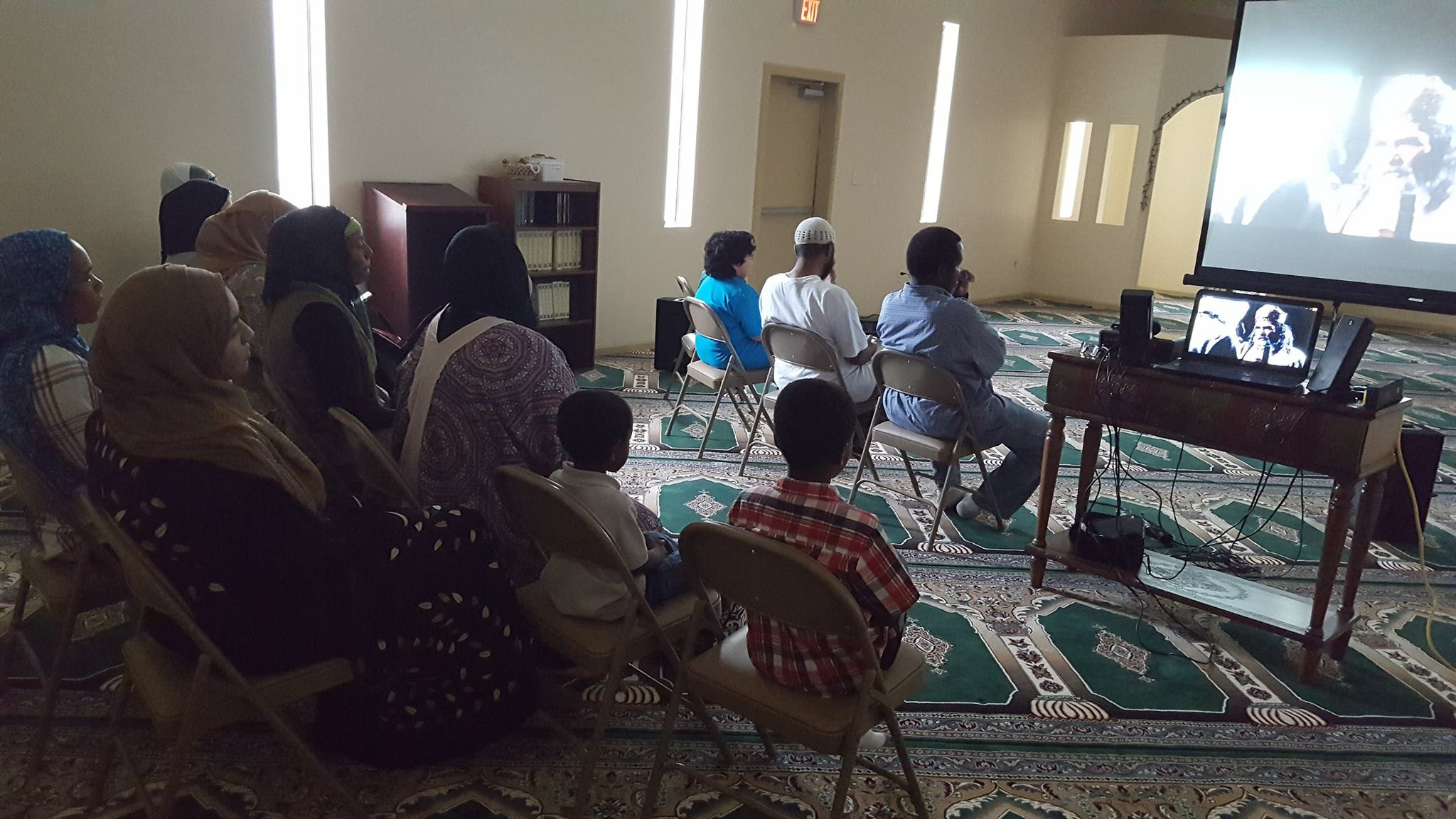 communities’
unique needs. All three locations of MAR — Los Angeles, Houston, and
Chicago — seek to provide this space and the resources needed to
cultivate the sense of self-awareness that strengthens the souls,
provides nourishment to the bodies and serves truth to the oppressed in
times of rampant anti-Blackness and anti-Islamic sentiment.
communities’
unique needs. All three locations of MAR — Los Angeles, Houston, and
Chicago — seek to provide this space and the resources needed to
cultivate the sense of self-awareness that strengthens the souls,
provides nourishment to the bodies and serves truth to the oppressed in
times of rampant anti-Blackness and anti-Islamic sentiment. limited
educational resources for a largely African American and
Spanish-speaking population were key issues that that the masjid
addresses by offering programs in Spanish and English while also
providing traditional prayer services in Arabic. The Houston masjid was a
sincere labor of love in which Hassan Abdul-Karim took into
consideration both the history and needs of the Fifth Ward community,
once known as the “Bloody 5th”[3] to unite the community with communal
meals, activities such as Islamic movie nights, community clean-up
efforts and sincere da’wah through service.
limited
educational resources for a largely African American and
Spanish-speaking population were key issues that that the masjid
addresses by offering programs in Spanish and English while also
providing traditional prayer services in Arabic. The Houston masjid was a
sincere labor of love in which Hassan Abdul-Karim took into
consideration both the history and needs of the Fifth Ward community,
once known as the “Bloody 5th”[3] to unite the community with communal
meals, activities such as Islamic movie nights, community clean-up
efforts and sincere da’wah through service.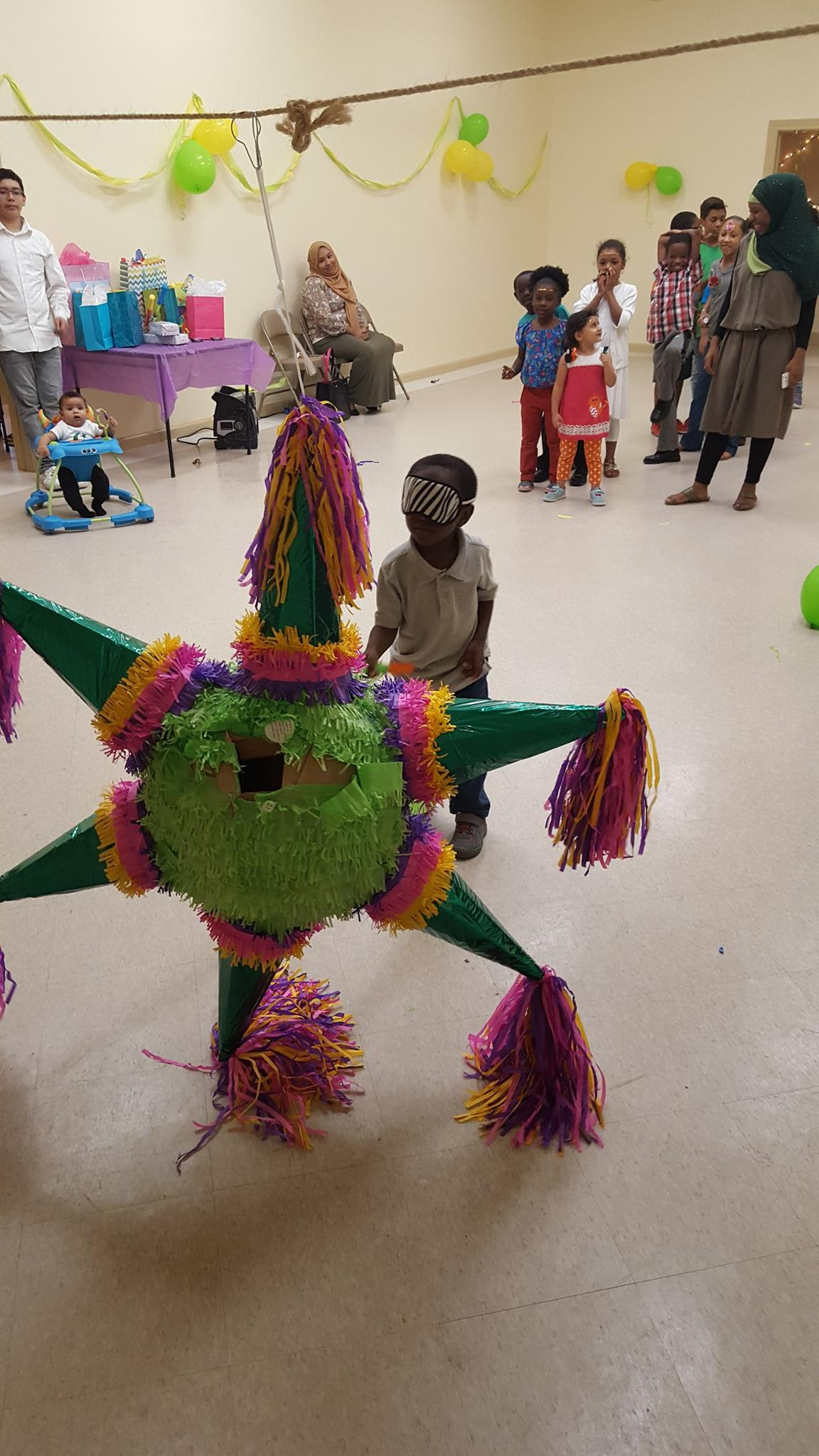 twelve years of his life pursuing Islamic Studies in seminaries and
universities in the United States and Iran. In 2005, he earned an MA in
Religious Studies at Duke University before moving to Texas in 2007 to
pursue a PhD in Arabic Studies at the University of Texas at Austin.
After a short hiatus, Shaykh Muhibullah resumed PhD studies at the
University of Tehran while also pursuing ijtihad with prominent
Ayatollahs like Waheed Al-Khurasani and Sayyid Kamal Al-Haydari in the
Islamic Seminary of Qom, Iran.
twelve years of his life pursuing Islamic Studies in seminaries and
universities in the United States and Iran. In 2005, he earned an MA in
Religious Studies at Duke University before moving to Texas in 2007 to
pursue a PhD in Arabic Studies at the University of Texas at Austin.
After a short hiatus, Shaykh Muhibullah resumed PhD studies at the
University of Tehran while also pursuing ijtihad with prominent
Ayatollahs like Waheed Al-Khurasani and Sayyid Kamal Al-Haydari in the
Islamic Seminary of Qom, Iran.